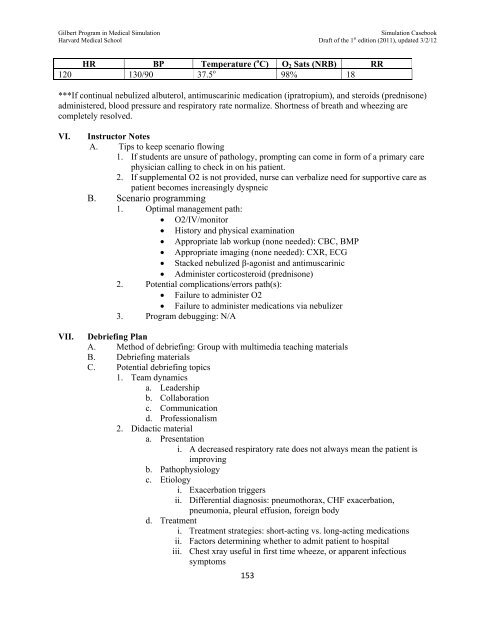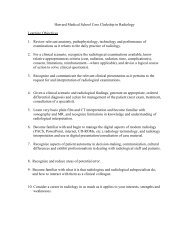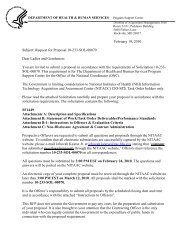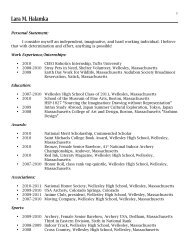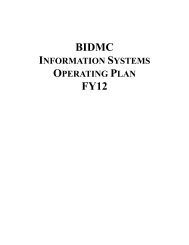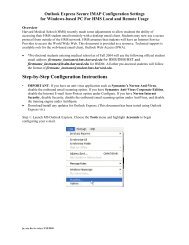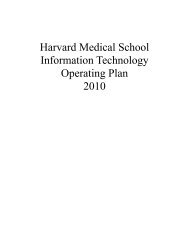SIMULATION CASEBOOK - MyCourses
SIMULATION CASEBOOK - MyCourses
SIMULATION CASEBOOK - MyCourses
You also want an ePaper? Increase the reach of your titles
YUMPU automatically turns print PDFs into web optimized ePapers that Google loves.
Gilbert Program in Medical Simulation<br />
Simulation Casebook<br />
Harvard Medical School Draft of the 1 st edition (2011), updated 3/2/12<br />
HR BP Temperature ( o C) O 2 Sats (NRB) RR<br />
120 130/90 37.5 o 98% 18<br />
***If continual nebulized albuterol, antimuscarinic medication (ipratropium), and steroids (prednisone)<br />
administered, blood pressure and respiratory rate normalize. Shortness of breath and wheezing are<br />
completely resolved.<br />
VI.<br />
VII.<br />
Instructor Notes<br />
A. Tips to keep scenario flowing<br />
1. If students are unsure of pathology, prompting can come in form of a primary care<br />
physician calling to check in on his patient.<br />
2. If supplemental O2 is not provided, nurse can verbalize need for supportive care as<br />
patient becomes increasingly dyspneic<br />
B. Scenario programming<br />
1. Optimal management path:<br />
O2/IV/monitor<br />
History and physical examination<br />
Appropriate lab workup (none needed): CBC, BMP<br />
Appropriate imaging (none needed): CXR, ECG<br />
Stacked nebulized β-agonist and antimuscarinic<br />
Administer corticosteroid (prednisone)<br />
2. Potential complications/errors path(s):<br />
Failure to administer O2<br />
Failure to administer medications via nebulizer<br />
3. Program debugging: N/A<br />
Debriefing Plan<br />
A. Method of debriefing: Group with multimedia teaching materials<br />
B. Debriefing materials<br />
C. Potential debriefing topics<br />
1. Team dynamics<br />
a. Leadership<br />
b. Collaboration<br />
c. Communication<br />
d. Professionalism<br />
2. Didactic material<br />
a. Presentation<br />
i. A decreased respiratory rate does not always mean the patient is<br />
improving<br />
b. Pathophysiology<br />
c. Etiology<br />
i. Exacerbation triggers<br />
ii. Differential diagnosis: pneumothorax, CHF exacerbation,<br />
pneumonia, pleural effusion, foreign body<br />
d. Treatment<br />
i. Treatment strategies: short-acting vs. long-acting medications<br />
ii. Factors determining whether to admit patient to hospital<br />
iii. Chest xray useful in first time wheeze, or apparent infectious<br />
symptoms<br />
153


